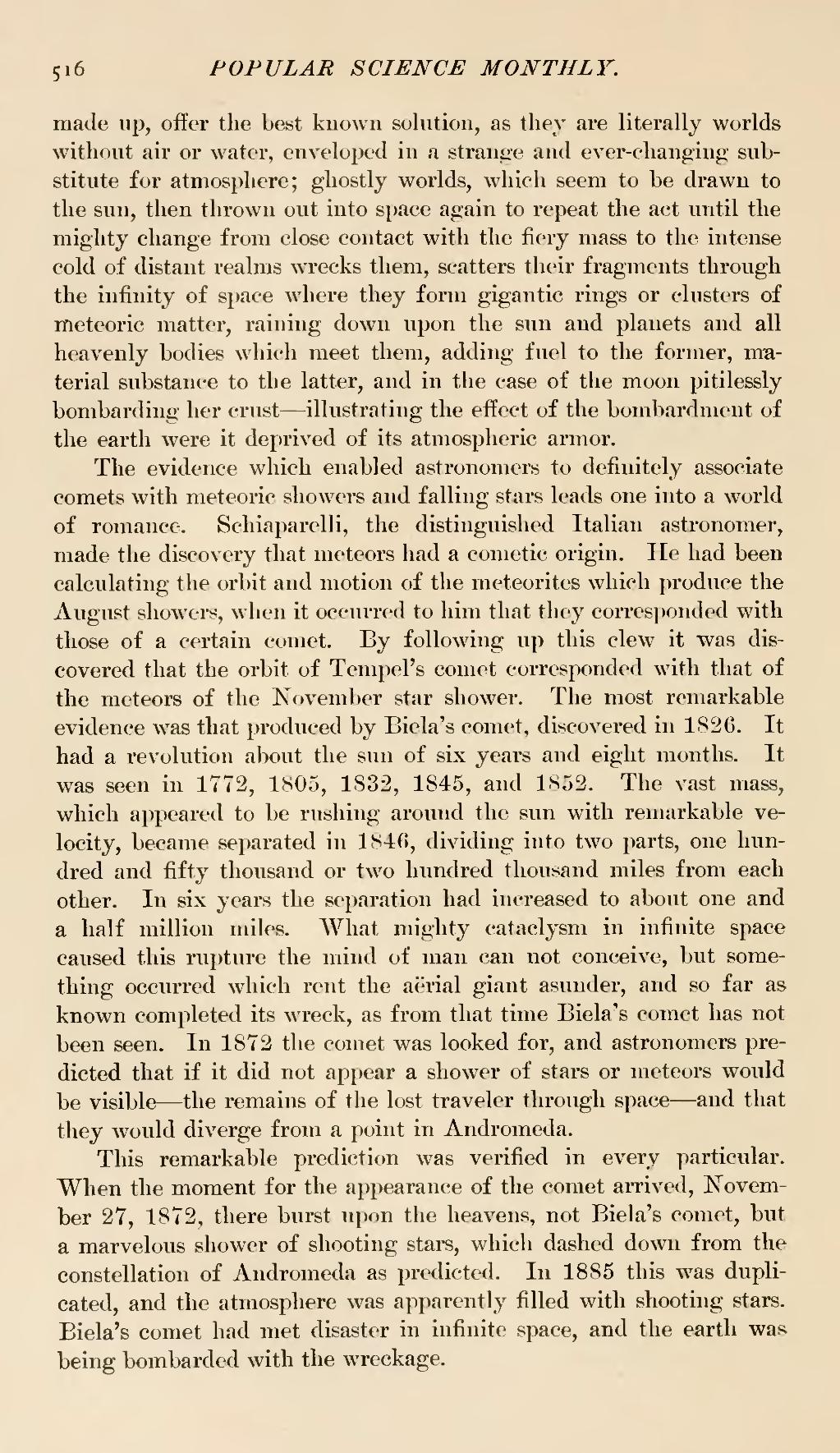made up, offer the best known solution, as they are literally worlds without air or water, enveloped in a strange and ever-changing substitute for atmosphere; ghostly worlds, which seem to be drawn to the sun, then thrown out into space again to repeat the act until the mighty change from close contact with the fiery mass to the intense cold of distant realms wrecks them, scatters their fragments through the infinity of space where they form gigantic rings or clusters of meteoric matter, raining down upon the sun and planets and all heavenly bodies which meet them, adding fuel to the former, material substance to the latter, and in the case of the moon pitilessly bombarding her crust—illustrating the effect of the bombardment of the earth were it deprived of its atmospheric armor.
The evidence which enabled astronomers to definitely associate comets with meteoric showers and falling stars leads one into a world of romance. Schiaparelli, the distinguished Italian astronomer, made the discovery that meteors had a cometic origin. He had been calculating the orbit and motion of the meteorites which produce the August showers, when it occurred to him that they corresponded with those of a certain comet. By following up this clew it was discovered that the orbit of Tempel's comet corresponded with that of the meteors of the November star shower. The most remarkable evidence was that produced by Biela's comet, discovered in 1826. It had a revolution about the sun of six years and eight months. It was seen in 1772, 1805, 1832, 1845, and 1852. The vast mass, which appeared to be rushing around the sun with remarkable velocity, became separated in 1846, dividing into two parts, one hundred and fifty thousand or two hundred thousand miles from each other. In six years the separation had increased to about one and a half million miles. What mighty cataclysm in infinite space caused this rupture the mind of man can not conceive, but something occurred which rent the aerial giant asunder, and so far as known completed its wreck, as from that time Biela's comet has not been seen. In 1872 the comet was looked for, and astronomers predicted that if it did not appear a shower of stars or meteors would be visible—the remains of the lost traveler through space—and that they would diverge from a point in Andromeda.
This remarkable prediction was verified in every particular. When the moment for the appearance of the comet arrived, November 27, 1872, there burst upon the heavens, not Biela's comet, but a marvelous shower of shooting stars, which dashed down from the constellation of Andromeda as predicted. In 1885 this was duplicated, and the atmosphere was apparently filled with shooting stars. Biela's comet had met disaster in infinite space, and the earth was being bombarded with the wreckage.

